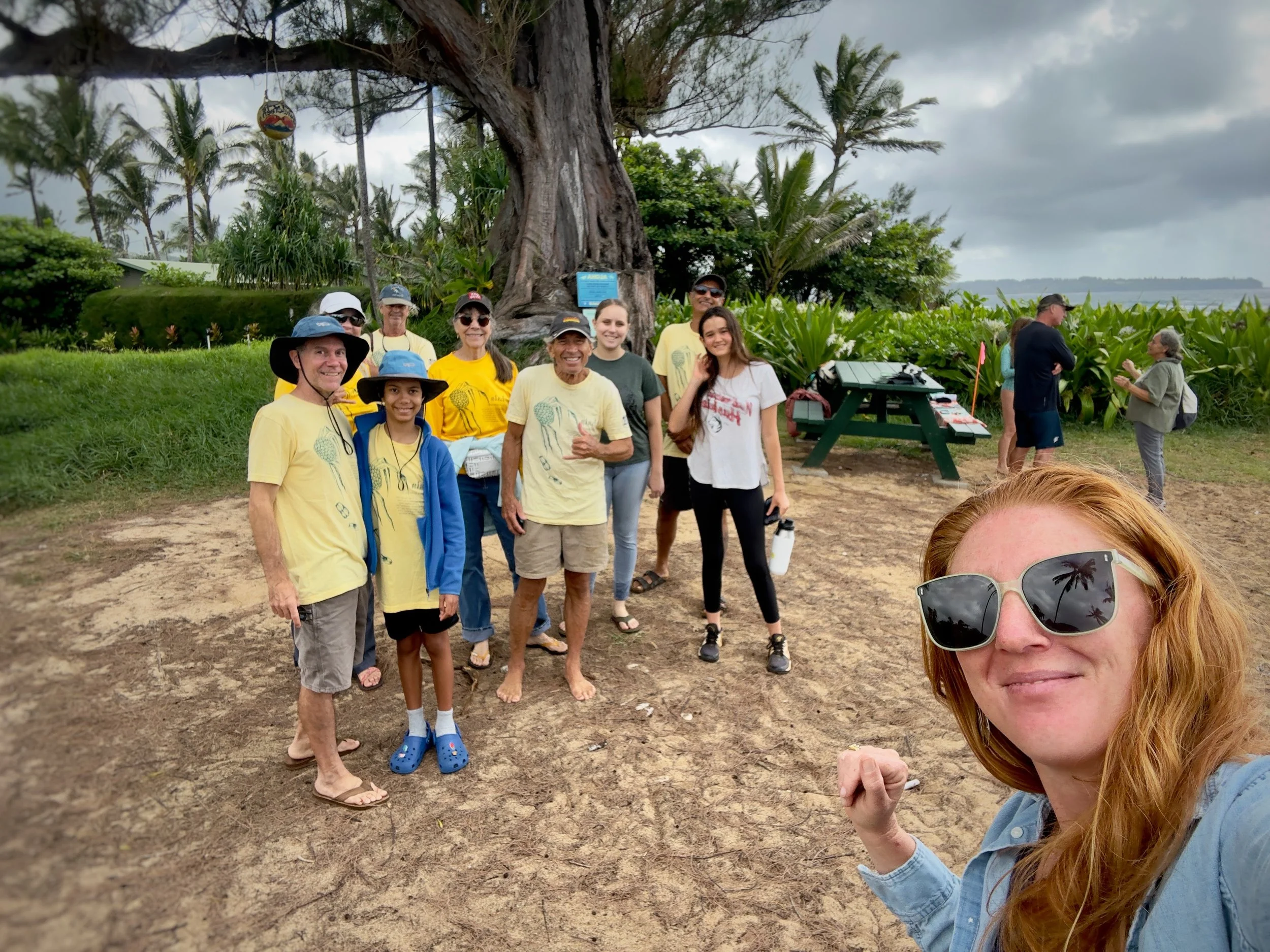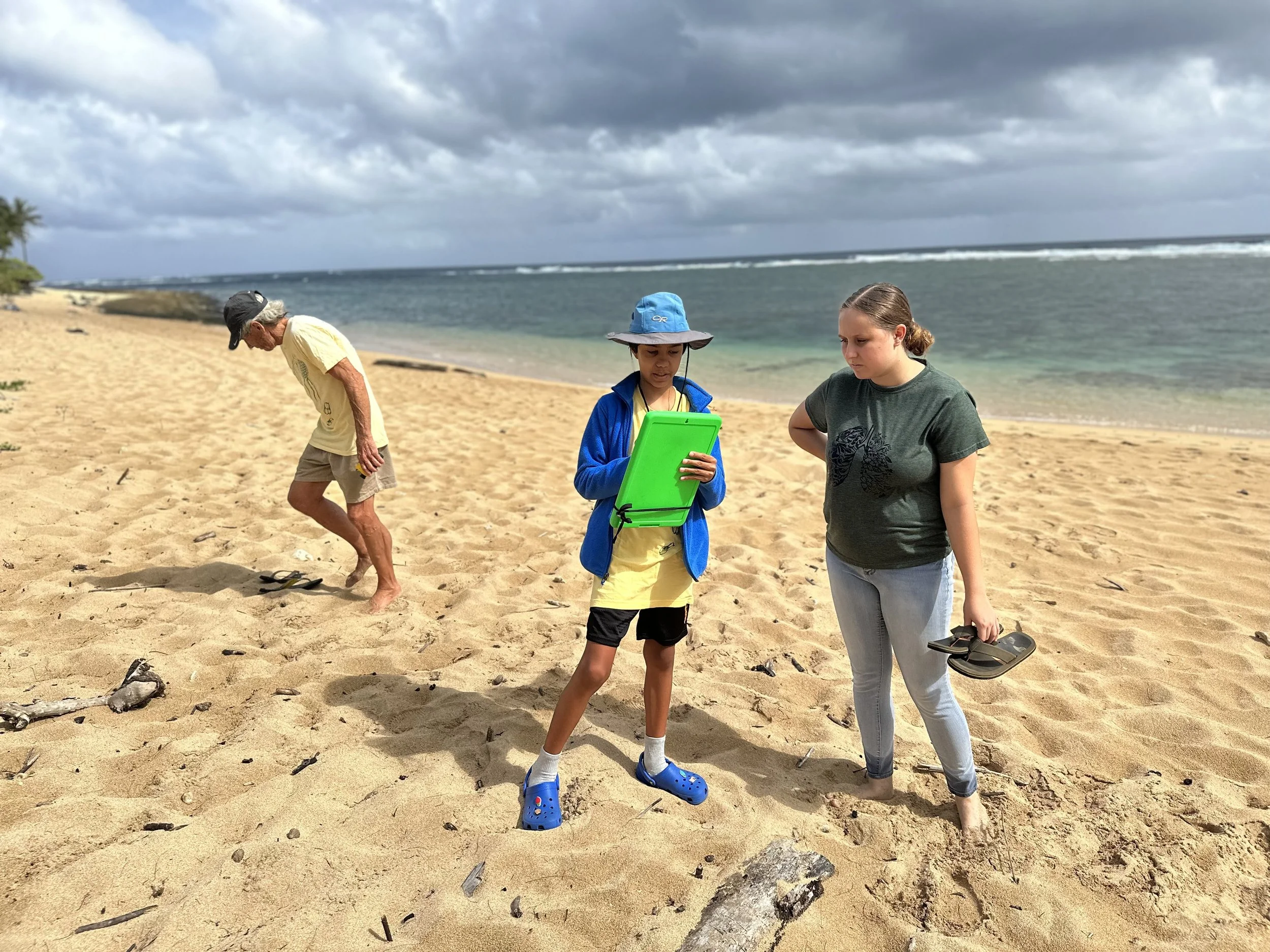
Citizen Foresters
Our relationship with trees is multifaceted - we look to trees for shade, food, shelter, beauty, and medicine as markers of history, and often take for granted the other benefits they provide as air filters, carbon captures, oxygen producers, and soil stabilizers.
In June, Understory Alliance partnered with the Citizen Forester Program to help foster awareness and appreciation of the trees in our everyday lives. Volunteers with the program came out to help measure a candidate for Exceptional Tree status, a large shoreline ironwood tree in Haena, and to document trees at Haena Beach Park.
The Citizen Forester Program is a partnership of local, state, and federal agencies working to protect Hawaii’s urban forests. It rose out of the Hawaiʻi Forest Action Plan to collect a formal inventory of trees in the urban/public environment. Since 2016 trained volunteers have helped map and document trees in Hawaii and Guam. Volunteers learn to identify our common urban/public trees, measure trees, evaluate canopy cover, and assess basic tree health. Data collected in the program helps to identify “where our trees are located, which ones need attention, and what benefits they provide.” This data helps plan for disaster recovery, health initiatives, and green infrastructure.
The benefits of trees are numerous, environmental, social, and economic. If you would like to learn more or get involved and become a tree ambassador for your community, visit Citizen Foresters — Smart Trees Pacific.
A beach tree in Haena is under threat of being removed with a section of weeds in an effort to cut overgrown vegetation back from the shoreline. The ironwood was planted over 75 years ago and has become very valuable to the community, who oppose the cut-down. Children climb and play on it, people relax under its shade, and the tree holds happy memories for many of the area’s residents on top of its ongoing contributions to their experience of the beach.
The Exceptional Tree Act protects designated trees from unnecessary removal. Exceptional trees possess significant historical or cultural value, or are deemed worthy of preservation by a county arborist advisory committee due to their age, rarity, location, size, aesthetic quality, or endemic status. (To view a list and map of Hawaii’s exceptional trees, learn more about requirements, or nominate a tree, visit Exceptional Trees - THE OUTDOOR CIRCLE.)
Tree measurements such as height, trunk diameter, canopy spread, and species are necessary information for the exceptional tree application. Citizen Forester and Understory Alliance volunteers collected this information and have submitted the application to protect the ironwood under Exceptional Tree status.
At Haena Beach Park, 22 trees were mapped and documented; species included coconut palm, ironwood, kamani, false kamani, sea-grape, and manila palm. Data recorded included location, environment, species, trunk diameter, height, canopy spread and density, light exposure, and condition. Kauai County uses this data to monitor native and invasive plants across the island and keep track of eco benefits, including carbon capture, property value increase, and prevented erosion, runoff, and air and water pollution provided by the trees.
Understory Alliance interns paired up with experienced Citizen Forester volunteers to learn and practice the methods of measuring tree height and trunk diameter, and estimating, among other criteria, a tree’s foliage density, light exposure, condition, and dieback percentage. This fieldwork helps inspire and prepare the next generation to protect and appreciate our trees and their vitality to our environment and day-to-day lives.
Written by Kaia Dunford and Lora Petrak




